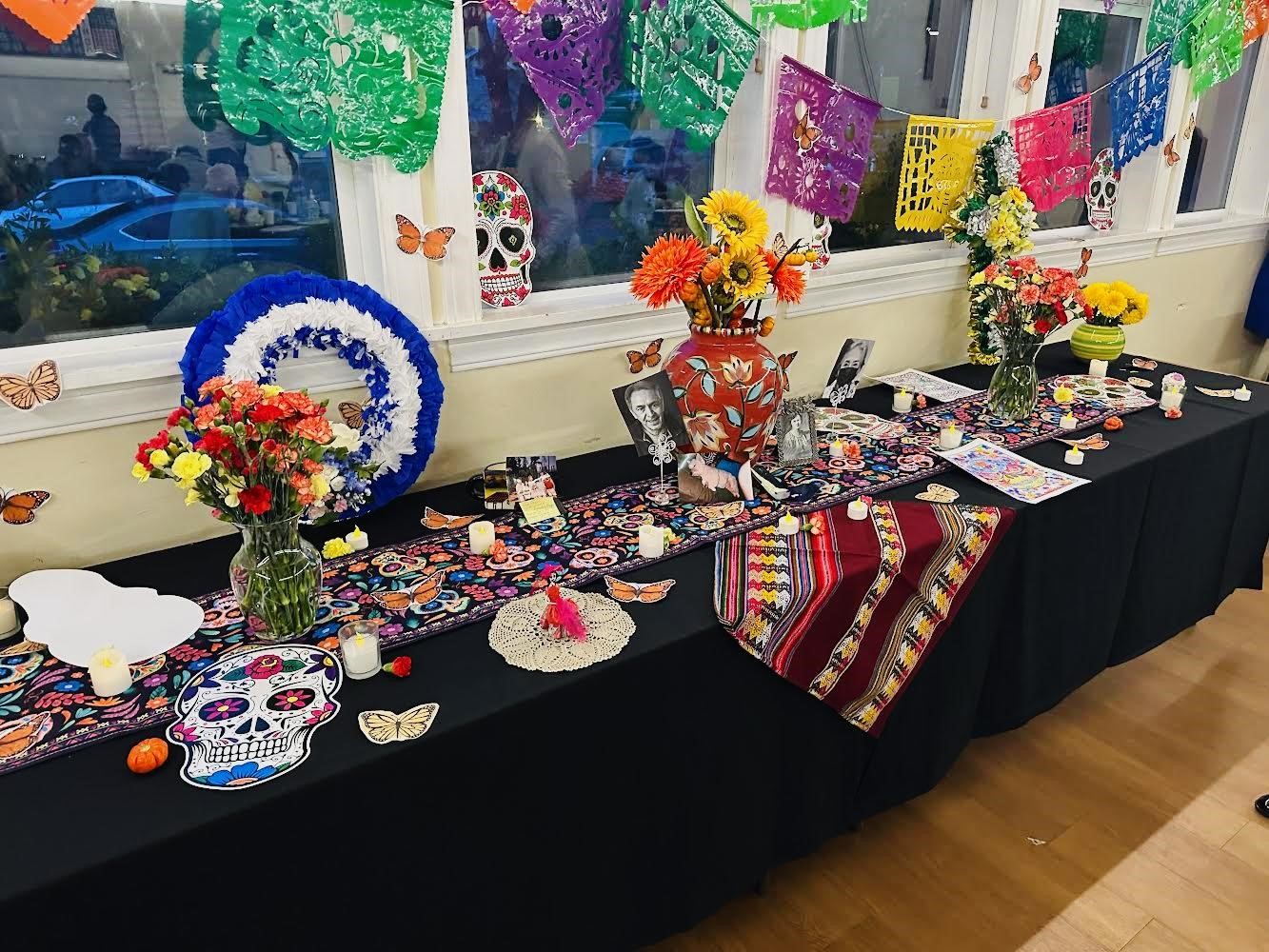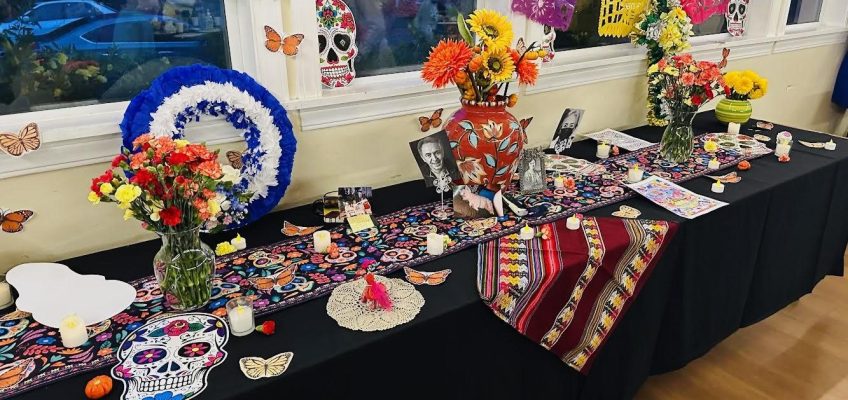by Janette Garcia, Lead Social Worker
Jan 2024
On Wednesday, November 1st, South Park Senior Center built a community altar with photographs, flowers, candles and butterflies to honor the memory of our late loved ones, and according to tradition, to reunite with them.
Across Latin America, this celebration takes place annually and it may vary from one country to the next—November 1st, the Day of the Dead (Dia de los Muertos) or in some countries called All Saints Day (Dia de Todos los Santos), and November 2nd, is a different celebration called All Souls Day (Dia de los Fieles Difuntos).
During this event, we learned from the seniors how they celebrate this holiday in their countries.
Someone from Oaxaca, Mexico mentioned that the celebrations start on the night of October 31st when the spirits return at midnight. The next day is the day to remember children that have passed. The second day of November is the day to welcome the spirits of the adults that have departed and are no longer with us.
A senior from Venezuela pointed out that, more than a celebration in her country, it is a time for reflection and remembering their lost loved ones, a person from Colombia agreed with that statement.
In El Salvador, said a senior, people gather at the cemetery and decorate the tombs, they make crowns and crosses with colorful flowers. They sing, play music, and have lunch on the graves.
The Day of the Dead traditions include building private altars containing the favorite food, beverage, photos and memorabilia of the departed, visits with family members, prayers, and stories about those who have died. People also go to the cemetery and visit the graves, bringing candles and flowers, cleaning their tombstone and praying. The celebrations vary from one country and region to another. But one thing we all have in common is to honor the dead and positively remember our lost loved ones.
SPSC hosted two special guests that night, one Chilean Minister from East Shore Unitarian Church who delivered a very thoughtful and powerful message which was relevant for the occasion, and a musician from Costa Rica who played the violin and delighted the participants with Latin American music.
Additionally, the seniors participated in activities—one of them was using Monarch butterflies. In some cultures, Monarchs have served as a symbol of connecting the living to the dead. The metamorphosis of the Monarch also represents transformation, growth, and change.
Our chefs prepared special desserts to celebrate such as Salvadorian Ayote de Miel (sweet pumpkin), Pan de Muerto from Mexico and Bolivian Tanta Wawas (sweet bread figurines)
SPSC hosted this special celebration and created a community healing space while keeping our Latino culture alive.

The altar at SPSC to celebrate and honor loved ones who have passed


